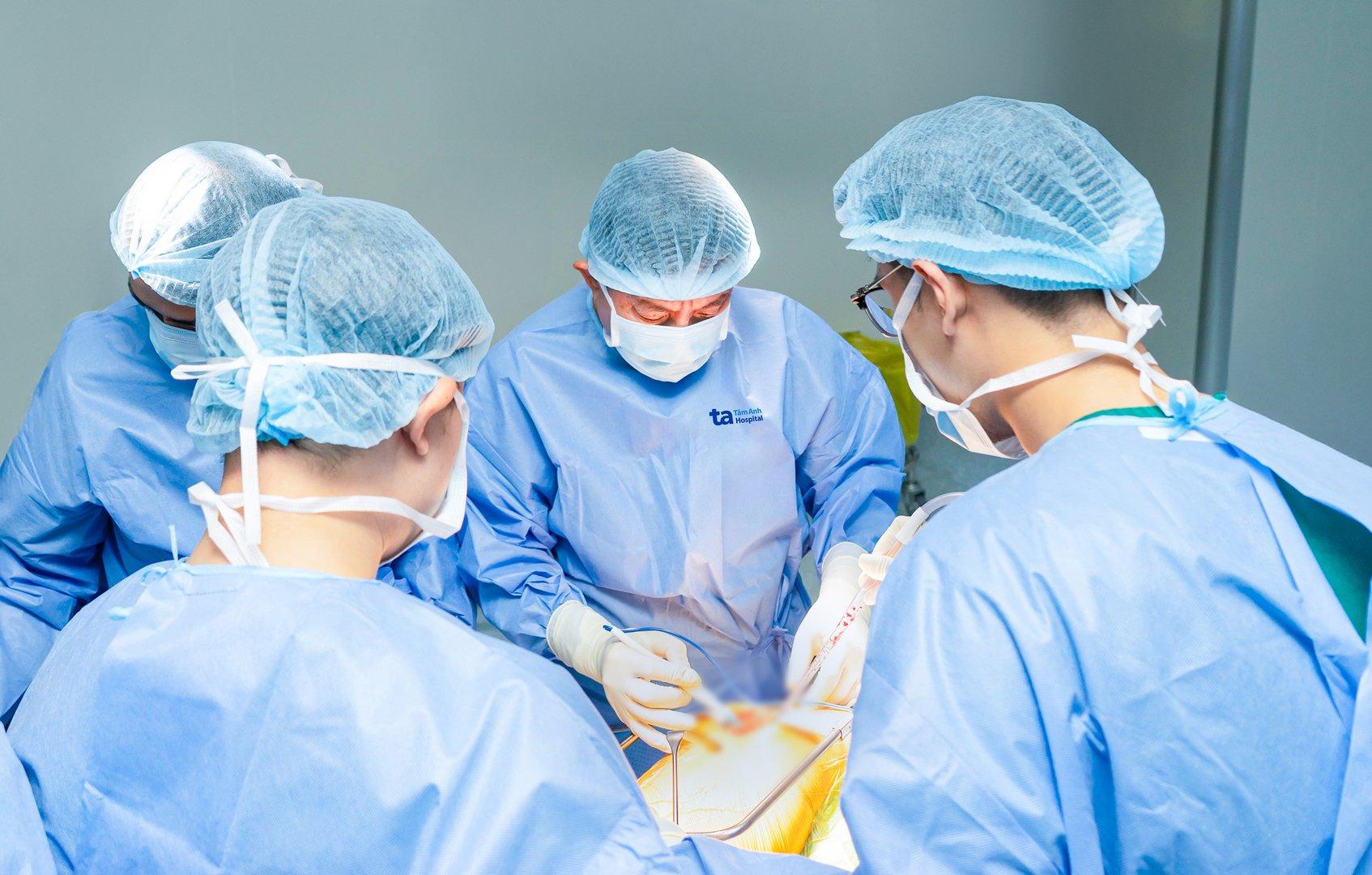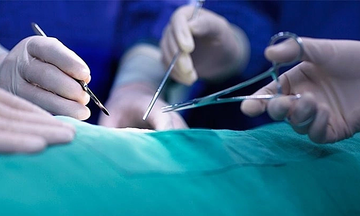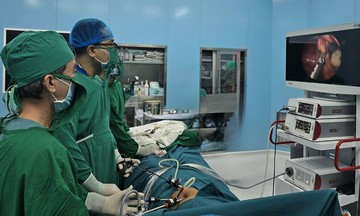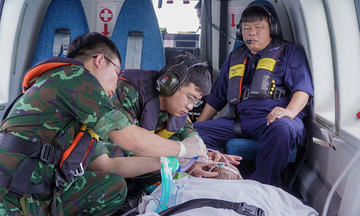Oai presented at Tam Anh General Hospital in Ho Chi Minh City with stiffness and pain in both hips, unable to bend due to spinal fusion. Diagnosed with spinal arthritis over 20 years prior, he developed avascular necrosis in both hips more than 10 years ago. The persistent pain left him exhausted, weak, and unable to walk.
Dr. Le Van Tuan, Director of the Center for Orthopedic Trauma, explained that several sections of Oai's spine had fused, significantly restricting his flexibility and movement. The disease also caused avascular necrosis, leading to deformation and stiffness in both hip joints. A double hip replacement was deemed necessary.
Due to the fusion and inflexibility of his lumbar spine, a standard spinal anesthetic was impossible. General anesthesia via endotracheal intubation was required. The procedure was further complicated by the fusion of his cervical spine, which prevented him from extending his neck sufficiently for intubation. The respiratory and anesthesia teams collaborated to perform a tracheoscopy for intubation.
Oai's left hip was operated on first, followed by the right. Surgeons performed an osteotomy to free the joint, removed the damaged bone and cartilage, and replaced them with specially sized prosthetic hip joints. The simultaneous replacement minimized pain, facilitated early rehabilitation, and reduced both treatment time and cost.
 |
Dr. Tuan (center) performing Oai's hip replacement surgery. Photo: *Tam Anh Hospital* |
Oai began rehabilitation exercises on the first post-operative day to prevent complications, accelerate recovery, manage pain, strengthen muscles, and improve mobility. Two months after surgery, he was pain-free for the first time in 10 years, capable of independent movement and daily activities.
 |
Dr. Tuan reviewing Oai's X-ray during a follow-up appointment 10 days post-surgery. Photo: *Tam Anh Hospital* |
Dr. Tuan emphasized the importance of adhering to the prescribed rehabilitation program. While spinal arthritis has no cure, medication and prescribed exercises are essential for managing the condition.
Early and characteristic symptoms of spinal arthritis include back and lower back pain, often accompanied by morning stiffness. The pain typically persists for at least 3 months, is not relieved by rest, but improves with gentle movement. Complications can range from joint and spinal fusion to hip damage, fractures, cardiovascular issues, and eye problems. Prompt medical attention at the first sign of symptoms is crucial to prevent serious complications.
Phi Hong












